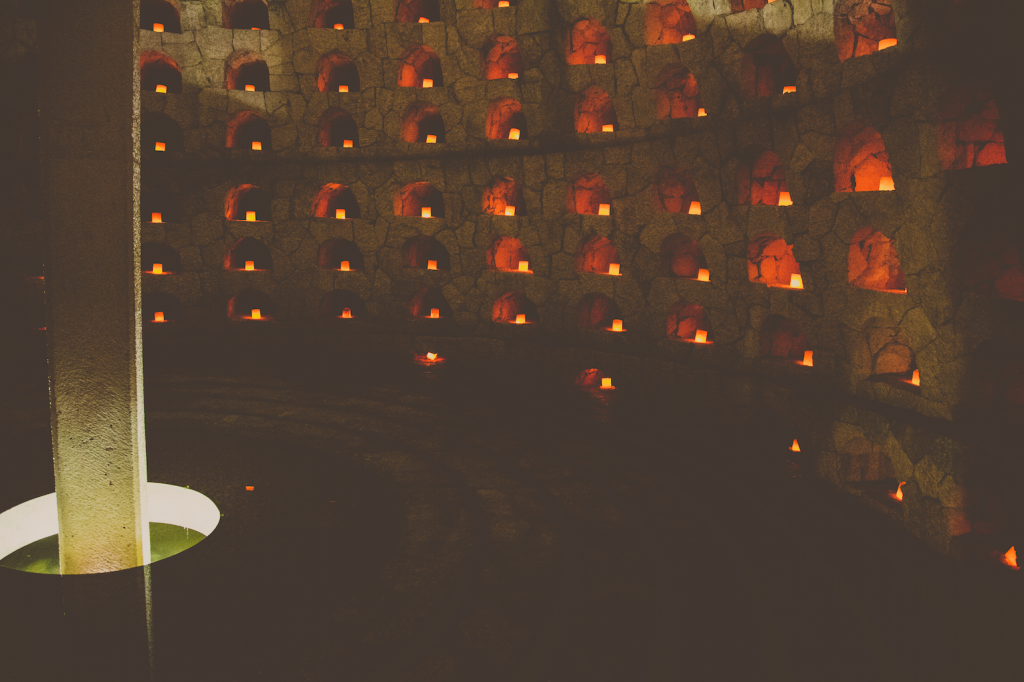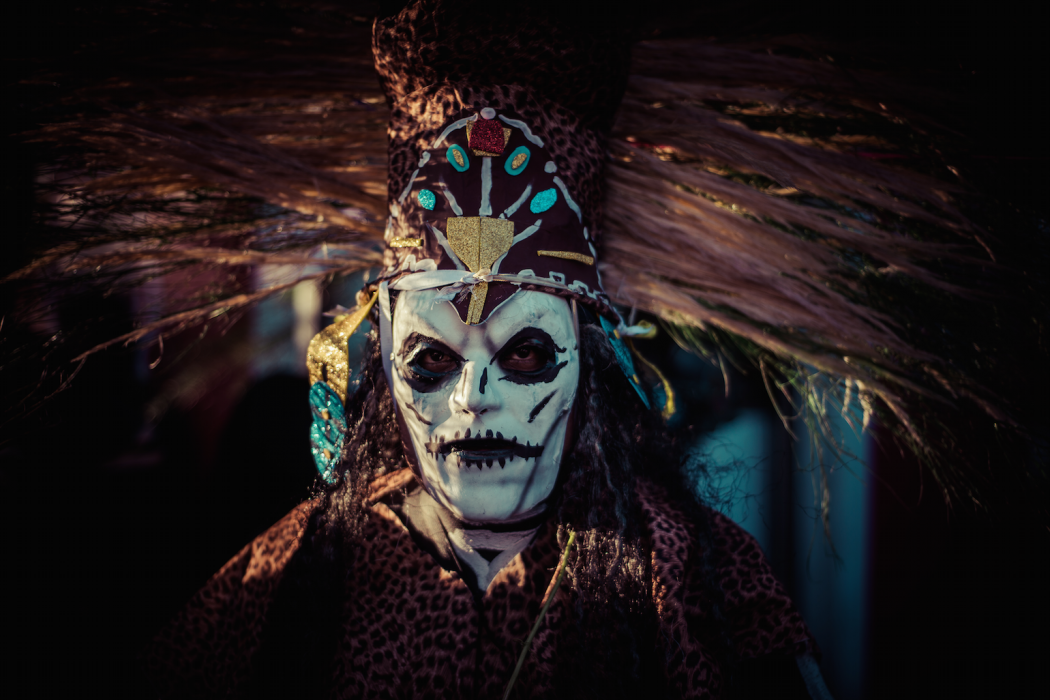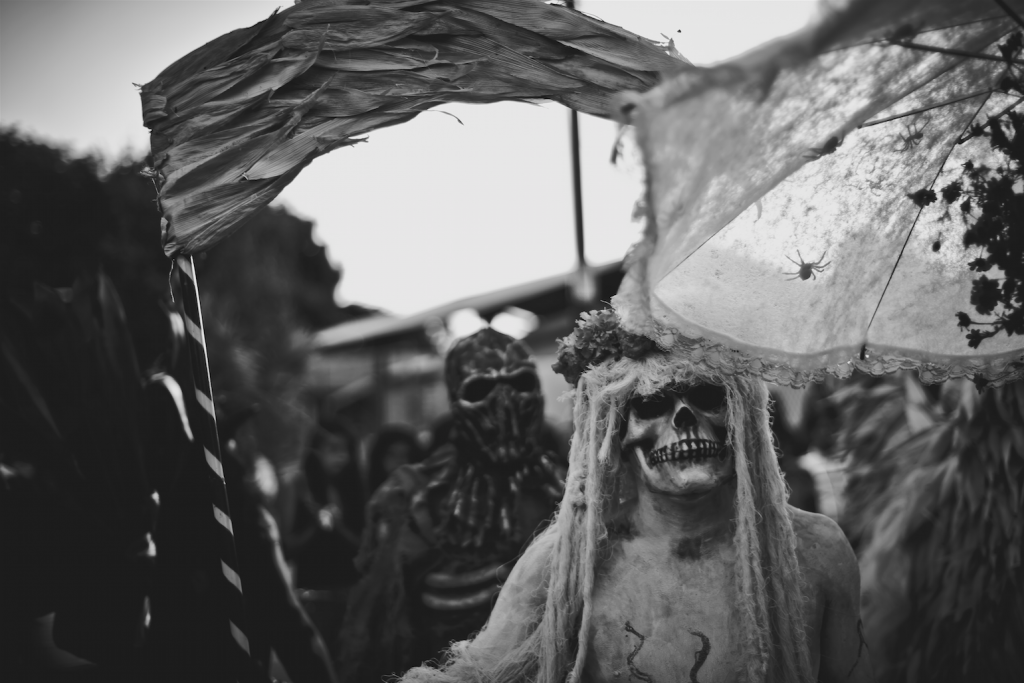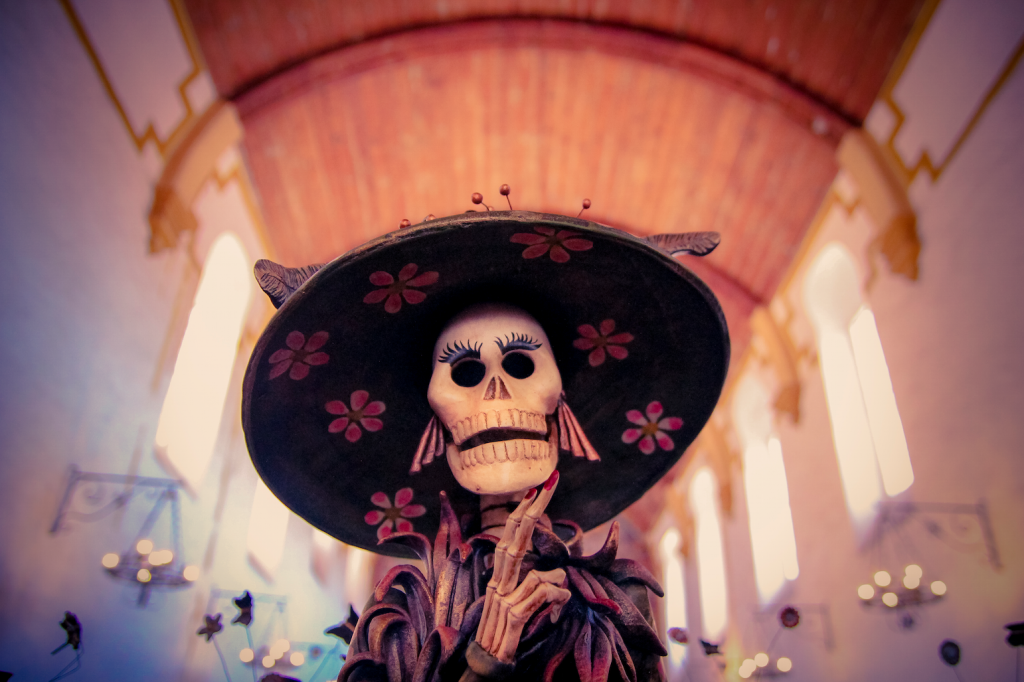The Mexicans believe that the dead should not be shamed with grief or sorrow — instead we should rejoice and honour our dead with the food, dance and festivities that they enjoyed in life.
Day of the Dead in Mexico is an explosion of experiences which vary according to each region’s heritage. The southern state of Oaxaca is rich in tradition and culture, and the festival has a strong presence there.
The celebrations begin on October 31st, when families go to markets to buy fruit and bread to bring to the altar of deceased relatives. The streets are filled with ornaments involving death, including La Calavera Catrina, a skeletal figure dressed in traditional clothing of the region.
That evening, families go to the cemeteries to visit deceased relatives. One of the most famous cemeteries, General Pantheon, is located in the state capital, Oaxaca. Here the main attraction is to visit the tombs found in the walls surrounding the cemetery, and one will also find people dressed in costume walking among the graves, often representing Santa Muerte, the figure of Death.
Another interesting site is the Pantheon in Xoxocotlan, a neighbouring town where the tradition is to watch all night for deceased relatives, accompanied by mariachi music, good food and beverages such as mezcal.
On November 1st and 2nd, towns hold traditional parades where men and women disguised as catrinas, devils and ghosts walk to the beat of the music. One of the most famous is the parade of the population of Candiani, a neighborhood in the city of Oaxaca.





